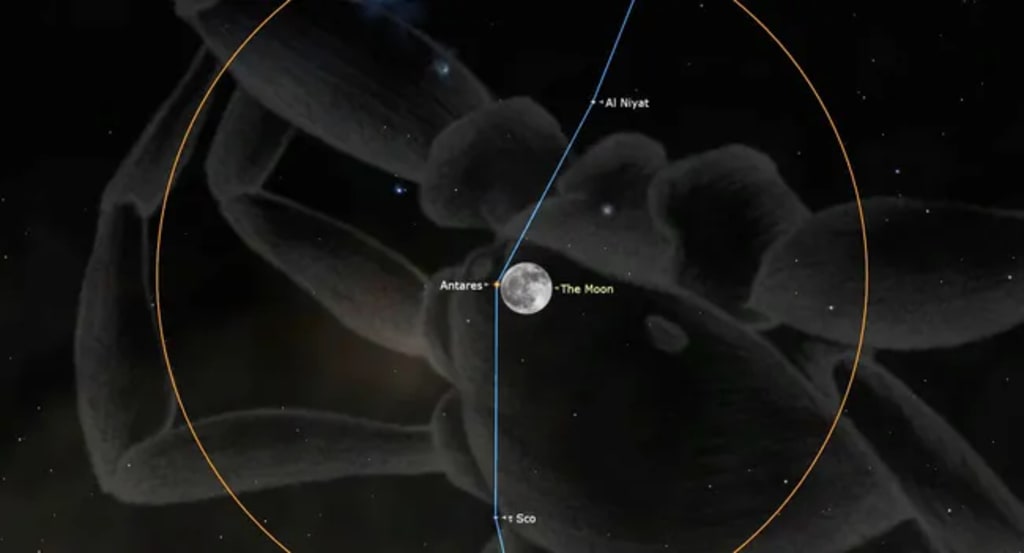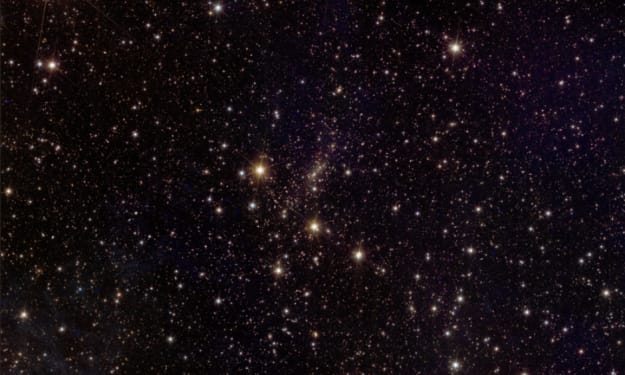How to watch bright red star Antares disappear behind the moon on May 23
For the third time this year, the bright red star Antares will be occulted or hidden by the moon on Thursday, May 23.

Sure, let's expand on the article to reach the target of 650 words:
---
For the third time this year, the bright red star Antares will be occulted or hidden by the moon on Thursday, May 23.
The first two occasions earlier this year provided skywatchers with spectacular celestial events, albeit during the early hours of the morning. Now, the upcoming stellar eclipse promises a different viewing experience. This time, the moon will be almost full, and Antares will be cloaked during more convenient evening hours. Such occurrences offer a rare opportunity for astronomy enthusiasts to witness the interplay between Earth's natural satellite and one of the brightest stars in the night sky.
The phenomenon will take place in a specific geographic zone. Those located south of a line stretching from near London, Ontario, to Avalon, New Jersey, will observe Antares vanish behind the moon. Meanwhile, regions north of this line will witness the moon pass just below the star's position, presenting an almost grazing spectacle. For instance, Philadelphia will experience the disappearance of Antares at 9:50 p.m. EDT, followed by its reappearance at 10:18 p.m. EDT.
However, the event's timing poses challenges for certain regions. For most of the central and western U.S., Antares will have already disappeared before darkness falls, offering a unique perspective to viewers upon its reappearance. Meanwhile, observers across the southeastern U.S. will see Antares slip behind the moon's eastern limb during evening twilight, only to emerge from the lunar shadow after nightfall.
Beyond North America, the celestial dance between Antares and the moon will be visible across Central America, the northern half of South America, and parts of western and central Africa. This widespread visibility underscores the global fascination with celestial events and the enduring allure of the night sky.
The brightness of the moon during the event will pose a challenge for observers. While it will appear "full" to the casual observer, there will be a very narrow, less than half a percent, sliver of darkness along the moon's western limb. This poses a stark contrast to the previous occultations, where the moon was either a narrow crescent or at a half phase. Consequently, witnessing Antares emerge from behind the moon's dark, unilluminated portion will require telescopes or at least binoculars, owing to the overwhelming brilliance of the lunar surface.
Despite this challenge, the event offers a unique opportunity to observe Antares and its faint companion star. Antares B, significantly dimmer than its counterpart, emerges five seconds before Antares itself during occultations. This presents a fleeting glimpse of a star that typically appears as a spark of glittering emerald against the backdrop of the giant Antares.
As the May 23 event draws near, it marks the culmination of a series of monthly occultations of Antares. These occurrences, part of a broader celestial dance, hold significant astronomical interest. However, this will be the final nighttime occultation in the current series over North America. Future occurrences will primarily take place during daylight hours or in twilight, altering the viewing experience for observers.
In conclusion, the May 23 occultation of Antares by the moon presents a captivating celestial event for observers across various regions. While the brightness of the moon poses challenges, it also offers a unique opportunity to witness the interaction between Earth's satellite and one of the brightest stars in the night sky. As astronomy enthusiasts await the event, they prepare to marvel at the wonders of the universe unfolding above them.
About the Creator
Raju Moses
I am a fascinating Writer of all available trending topic in the world.
Enjoyed the story? Support the Creator.
Subscribe for free to receive all their stories in your feed. You could also pledge your support or give them a one-off tip, letting them know you appreciate their work.





Comments (1)
Interesting and delicious content. Keep posting more